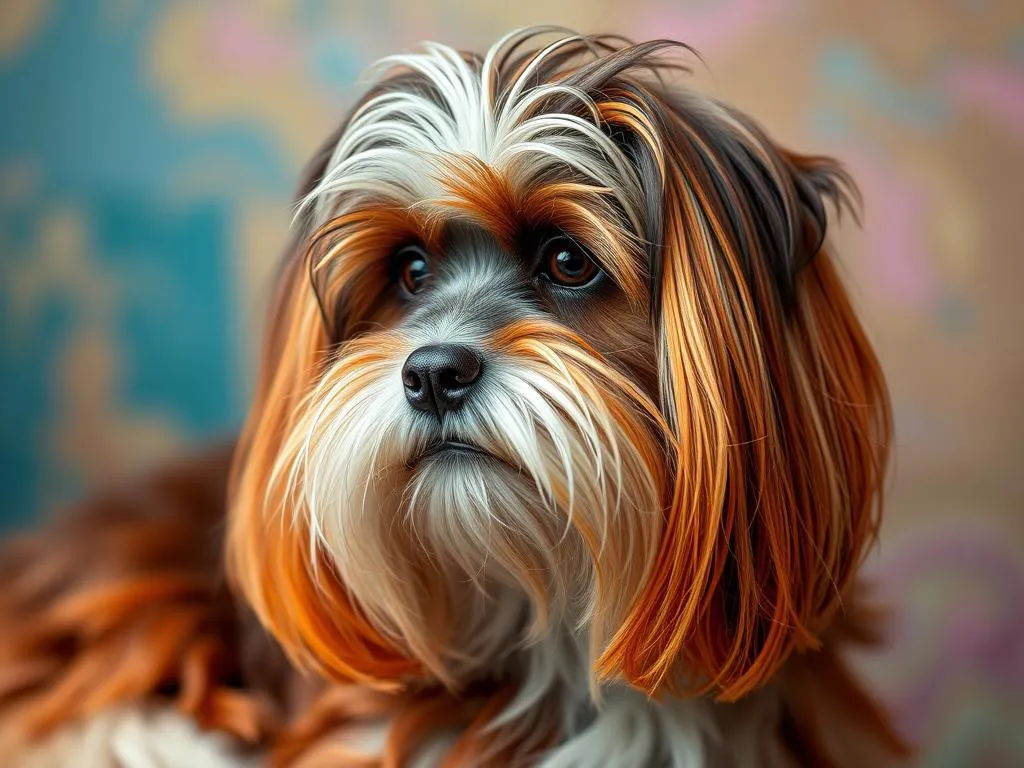
Introduction
The Havanese is a delightful toy breed that has captured the hearts of dog lovers around the world. Known for their playful demeanor, affectionate nature, and stunning coats, Havanese dogs are not only charming companions but also come in a variety of havanese colors. The importance of color variation in this breed goes beyond aesthetics; it can influence a dog’s personality, health, and even the adoption process. Understanding the different havanese colors can enhance your experience as a dog owner and help you make well-informed decisions when it comes to adoption.
Understanding Havanese Dogs
Breed History
The Havanese breed has a rich history that dates back to the 1500s in Cuba. These small dogs were favored by the aristocracy and became popular among the Cuban elite. They are descendants of the now-extinct Blanquito de la Habana, which was brought to Cuba by Spanish settlers. The breed’s cultural significance is evident in its role as a beloved companion, often seen prancing alongside their owners in vibrant Cuban neighborhoods. Over the years, the Havanese has made its way into households around the world, thanks to its friendly disposition and adaptability.
Physical Characteristics
Havanese dogs are small yet sturdy, typically weighing between 7 to 13 pounds and standing about 8.5 to 11.5 inches tall at the shoulder. They boast a long, flowing double coat that is soft to the touch. The outer layer is typically wavy or curly, while the undercoat is soft and insulating. This unique coat is one of the many features that make Havanese dogs stand out among toy breeds.
Temperament and Behavior
The Havanese is known for its cheerful and outgoing temperament. They are highly social dogs that thrive on human interaction and are known to be affectionate with their families. Their playful nature makes them great companions for children and other pets. However, Havanese can also display stubbornness, which may require consistent training and patience from their owners. Understanding their temperament and behavior is crucial in providing a loving environment for these lively dogs.
Color Variations in Havanese
Common Havanese Colors
Havanese dogs come in a wide array of colors, making each one unique. Some of the most common havanese colors include:
-
Black: A solid black Havanese has a sleek and elegant appearance. This color is often associated with a bold personality.
-
White: A pure white Havanese exudes purity and innocence, making them highly sought after. They tend to have a gentle demeanor.
-
Chocolate: The rich chocolate color in Havanese is a warm and inviting hue, often associated with a loving and friendly personality.
-
Cream: Cream-colored Havanese can have varying shades, from light to darker cream. They are known to be calm and affectionate.
-
Gold: Gold Havanese dogs are striking and vibrant, often seen as playful and spirited companions.
Rare Havanese Colors
While common colors are lovely, rare havanese colors are even more captivating. Some of these include:
-
Blue: This striking color results from a diluted black gene and is incredibly rare. Blue Havanese often have a unique and charming personality.
-
Sable: Sable Havanese have a beautiful mix of colors, typically dark-tipped fur that gives them a stunning appearance. Their temperament can vary widely due to their complex genetic background.
-
Liver: A liver Havanese has a rich reddish-brown color that is not only rare but also evokes a sense of warmth and affection.
The rarity of these colors can be attributed to genetic factors, and they may often have specific characteristics tied to their unique appearances.
Color Combinations
Another fascinating aspect of havanese colors is the various combinations that can occur. Multi-colored Havanese, such as brindle or parti-color, showcase a delightful mix of hues.
-
Brindle: This color combination features a striped pattern, typically involving shades of brown and black. Brindle Havanese often display a playful and energetic personality.
-
Parti-color: A parti-color Havanese has distinct patches of two or more colors, creating a visually appealing appearance. They are known for their friendly demeanor and charming antics.
Understanding how these combinations affect appearance can help potential owners appreciate the diversity within the breed.
Genetics of Havanese Colors
Inheritance Patterns
The inheritance of havanese colors is a complex process influenced by several key genes. The breed exhibits a variety of colors based on the combination of dominant and recessive genes inherited from their parents. For instance, the B locus gene determines the black or brown colors, while the E locus gene decides whether the coat will be solid or have patterns.
Breeding for Color
When it comes to breeding for specific havanese colors, ethical considerations must be taken into account. Some breeders may focus solely on achieving rare colors, which can inadvertently lead to health issues. Selecting for appearance may compromise temperament, leading to a less than ideal companion. Responsible breeding practices should prioritize the health and well-being of the dog above all else.
Caring for Havanese Based on Color
Grooming Needs
The grooming requirements for Havanese can vary depending on their color and coat type. Regular brushing is essential to prevent matting, especially for those with longer coats. Light-colored Havanese may require additional attention to keep their coats looking clean and free from stains. Furthermore, regular bathing is crucial for maintaining coat health, regardless of color.
Health Considerations
Certain havanese colors may be associated with specific health issues. For instance, some studies suggest that certain genetic lines may predispose Havanese to skin allergies or other conditions based on their coat color. Regular vet check-ups are essential to monitor any potential health concerns, ensuring a long and healthy life for your furry friend.
Choosing a Havanese by Color
Factors to Consider
While the color of a Havanese can be eye-catching, it should not be the only deciding factor when selecting a dog. Prospective owners should consider the dog’s temperament, health history, and compatibility with their lifestyle. A beautiful coat is appealing, but a well-rounded personality is essential for a fulfilling companionship.
Finding a Reputable Breeder
When looking for a Havanese, it’s crucial to find a reputable breeder who prioritizes the health and well-being of their dogs. Ask questions about their breeding practices, health screenings, and the importance they place on temperament. A responsible breeder will be transparent about any potential health issues associated with specific havanese colors and will provide a comprehensive background on the puppy’s lineage.
The Role of Havanese Colors in Adoption
Color Preferences Among Adopters
Interestingly, color can significantly influence the adoption process. Many adopters may have specific preferences for havanese colors, often swayed by societal perceptions of beauty. However, it’s essential to recognize that every color and pattern has its unique charm and personality.
Promoting Inclusivity in Adoption
Encouraging adoption regardless of color is vital. Each Havanese, whether black, cream, or brindle, deserves a loving home. Highlighting the importance of all Havanese breeds can help dispel misconceptions and promote a more inclusive approach to dog adoption, ensuring that every dog finds a forever home.
Conclusion
The significance of havanese colors extends beyond mere aesthetics; it plays a vital role in the breed’s identity and the experiences of dog owners. As you consider bringing a Havanese into your life, remember the importance of understanding their history, grooming needs, and health considerations associated with their colors. Embrace the diversity of the breed and promote responsible ownership that prioritizes health, temperament, and love above all else. Share your experiences and insights into the world of Havanese colors and help raise awareness about the beauty of adopting a Havanese, regardless of their coat color.









